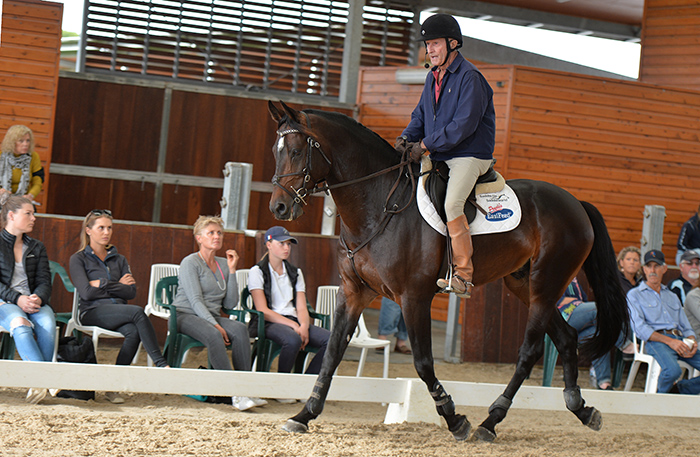 George Morris has not lost any of his magic touch or way with words over the years, and the world’s greatest jumping trainer is always appreciated.
George Morris has not lost any of his magic touch or way with words over the years, and the world’s greatest jumping trainer is always appreciated.
In 2018 however the venue was a change. Instead of enjoying the cool of the trees of Vicki Roycroft’s paddock at Mt White, we were installed in the beautifully designed indoor (which has the feel of an outdoor) at Boneo Park, and the four riders in the school were two Victorian showjumping couples, Michelle and Paul Brent, and Angela and Brook Dobbin.
Meet the Participants:
Brook rode Carrado MVNZ owned by Wendy Keddell of Mount View Sport Horses. The combination has just stepped up to World Cup level.
Angela rode Yarra Valley Jelly Bean owned by John and Liz Wright Smith, they have just stepped up to Mini Prix classes.
Michelle Clinton-Brent tells us, ‘I rode El Nino Vivace, by Vivant out of a 3* eventing mare by Family Ties and campaigned by Ian Balfour who bred Archie. He is now competing successfully at Mini Prix/Grand Prix level.’
Paul rode Fontaine Blue VDL. He was purchased as a 3-year-old, partially broken in, from the VDL stud in The Netherlands. This season he was leading Young Horse at Adelaide Royal and runner up at Melbourne Royal. He placed in the Futurity at the Australian Championships, Elysian Fields as well as finishing 3rd at the Summer Classic at SIEC last month.
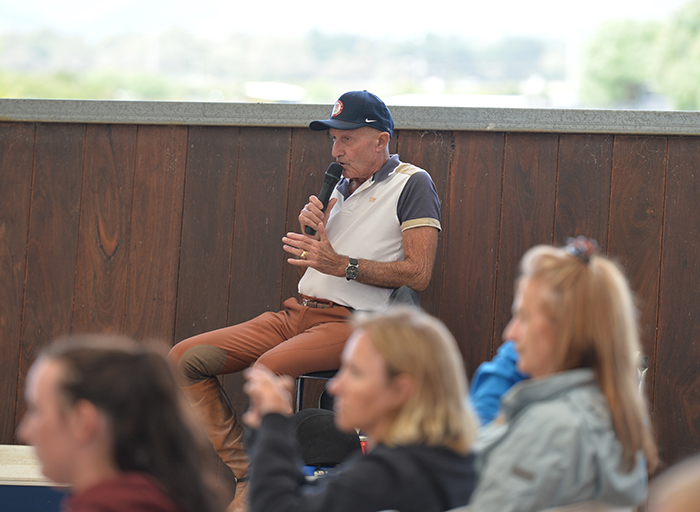
While the venue may change, the message remains the same: “The fashion of excessive weight on the rider’s buttock is not good for the horse, not good for the rider.” The riders are instructed to “lean slightly forward with your weight out of the saddle and down into your heels, and sink into the saddle and gradually straighten and sit as close to the pommel as possible.”
As always with George, every session starts with longer stirrups and a series of exercises on the flat. It’s a trifle amazing when you see riders who can do very complex things with their aids and bodies to make it over a jump, but who find what should be the simple stuff – transitions, lateral work – very difficult. It’s back to front, and maybe practising your flatwork annually at George’s clinic is not quite sufficient.
George demonstrates with Carrado
Now George has a somewhat different take on the training scale from the Germans. In the German training manual the scale runs like this: relaxation – though this is a poor rendition of the German Losgelassenheit, which also means the horse lets the aids flow through – often interpreted by dressage riders as riding your horse in endless circles with no leg and on a long rein, which is not the start of anything, save boredom. Then comes rhythm, contact, impulsion, straightness and finally, collection. George figures he has earned the right to his own interpretation, and he starts with impulsion.
“The French School is way older than the German School, people don’t realise how new the German School is, compared to the French. Both Schools tell us everything, but in a different way. The French taught us, impulsion is the mother of equitation. Not only do I get that in theory, but horses teach me that in practice. Most of the horses that I get on, they are cold, they don’t have natural impulsion, they are not forward thinkers.”
“Most horses, I get in the saddle, adjust my stirrup, adjust my reins and I kick them. KICK THEM! Because these colder blooded European horses are not thinking forward. I am adamant in my riding, my teaching, I don’t care what people might say, my business is my business, and I want impulsion first. Then you could put rhythm and straightness maybe into equal second. I put straightness second. This is what the French General, l’Hotte said – calm, forward, straight, so I’d put straight second. Make the horse straight after impulsion, and then I’d talk about rhythm. Rhythm is easier than straight, it’s very difficult to make the horse straight: it is very difficult to put the forehand in front of the hindquarter, or the hindquarter behind the shoulder. That is why we are obsessive with all the schooling figures – to make the horse straighter.”
“All the schooling figures improve the straightness, improve the impulsion, improve the rhythm. Impulsion, straightness and rhythm, those are the three cornerstones, after which the most difficult step is contact. That’s why riders use draw-reins. If I were the world dictator, I would ban draw-reins, gouges, chambons and tight martingales, because they pull the horse on the forehand. Think about draw-reins, even if you do ride from behind, they pull the horse onto the forehand.”
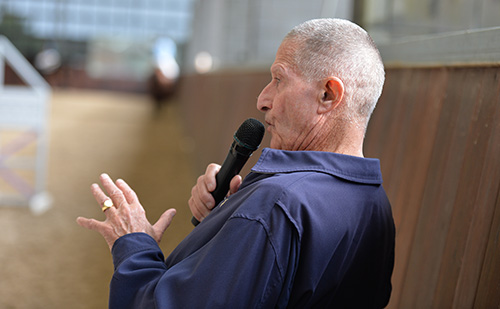
“I adhere very much to French, Spanish and German Classical Principles, which people don’t teach much because their teaching is competition orientated. Competition, be it hunters, dressage people, eventing people – just look to the judge and pull the horse’s head in, pull their head in. How many people place the head from behind?”
The good ones…
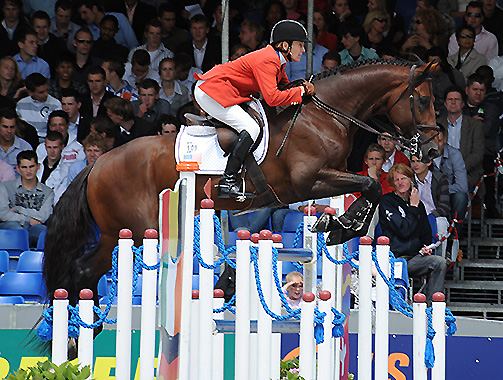
Anne Kursinski and Champ at the Rotterdam
“The good ones: Anne Kursinski, Peder Fredricson, riders like that. I was taught by classicists, Bill Steinkraus, Bert de Némethy, Gordon Wright, Gunnar Andersen. Luckily I never had teachers who were not classicists. Classical simply means, has stood the test of time. It is also beautiful.”
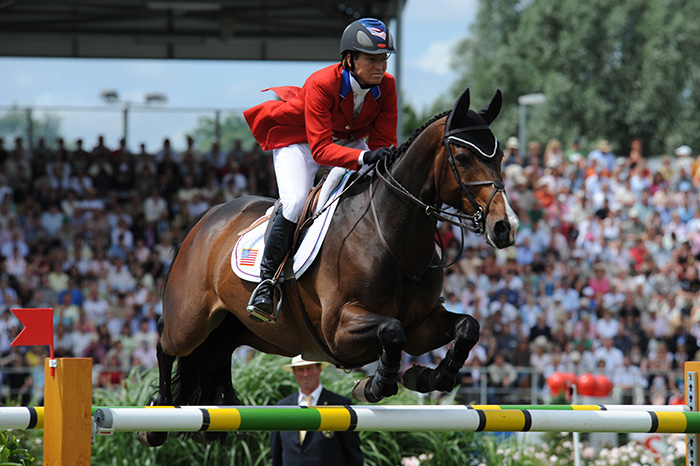
Beezie Madden and Authentic
“Bill Steinkraus, Michael Matz, John Whitaker, Beezie Madden – classicists, it is beautiful riding. The principles, the position, have stood the test of time and it’s beautiful, I am not interested in equitation unless it is beautiful.
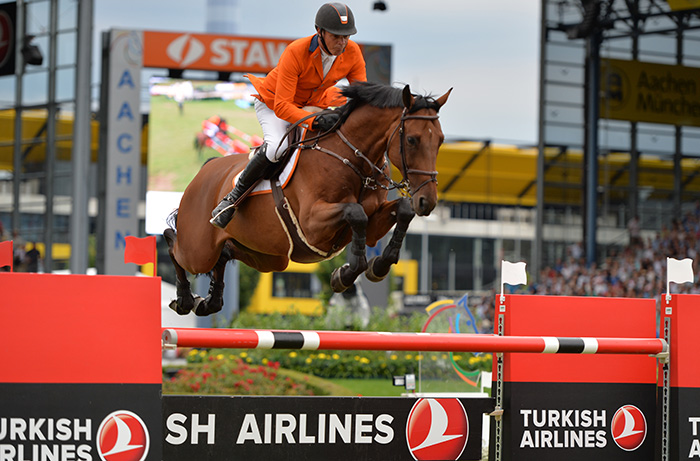
Jerome Dubbeldam and Zenith
“Jerome Dubbeldam might ride a little behind from where I would be, but it’s beautiful.”
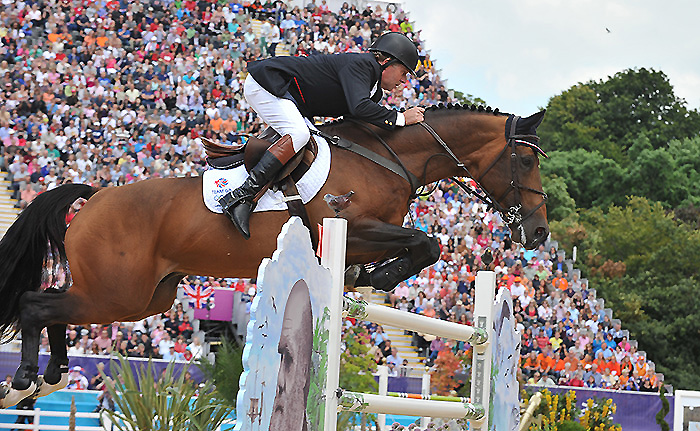
Nick Skelton and Big Star
“Nick Skelton always gets critiqued because of his English leg position, grip with the knee, foot home in the stirrup – Nick Skelton is a classicist – the way he gallops and jumps and puts the horse to the base of the fence, every fence he puts the horse to exactly the same spot. It’s beautiful and the horses love him. Every horse he ever had, he had nothing but success.”
More from the master follows…
“Isabell Werth is not built for the sport, she is a little short, but she is classical, to watch her is a joy. She plays with the horse.”
“I have always been very protective with my teaching to stay as close as I can to what I was taught – classical riding.”
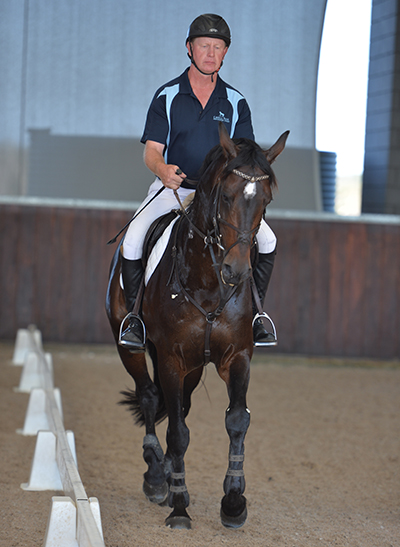
Paul Brent and Fontaine VDL
And that is exactly what George is doing with the four riders in the school. Teaching them to put their horses into a diagonal frame, forward from the inside leg to the outside rein, the inside leg creating the impulsion, the outside rein, the balance.
“The horse must be thinking forward, lively, energetic and regular. Straight by virtue of the inside leg to the outside rein.”
And as the Old Masters taught, straight by virtue of not going straight: “Ride some very light shoulder in, shoulder fore, keep the horse’s body straight, just move the feet, learn to control the horse’s inside hind leg.”
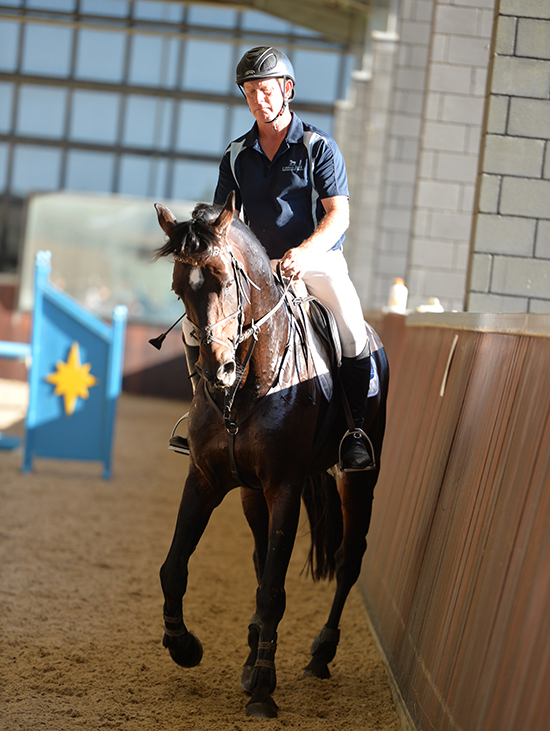
It wouldn’t be a clinic without a contact issue or two or three, maybe more. George’s solution never wavers: “Raise your hands so that you have a straight line from your elbow to the horse’s mouth. If the horse resists, DO NOT lower your hand. When the horse goes above the bit, follow him up and push the head down with your legs. I have higher hands than what is considered politically correct.”
Once again, the secret that really shouldn’t be any secret at all, is in transitions:
“Trot eight steps, walk two or three, trot again. Get the horse very light and listening to your forward and backwards aids. Constant transitions.”
The lateral work is starting to get a little more sophisticated, at least in its aim.
“In the rising trot a little shoulder in, ten strides, shoulder out, change the diagonal and bend, always sit on the outside of the bend. I don’t care if it is a perfect shoulder in, I do care that he accepts your inside leg.”
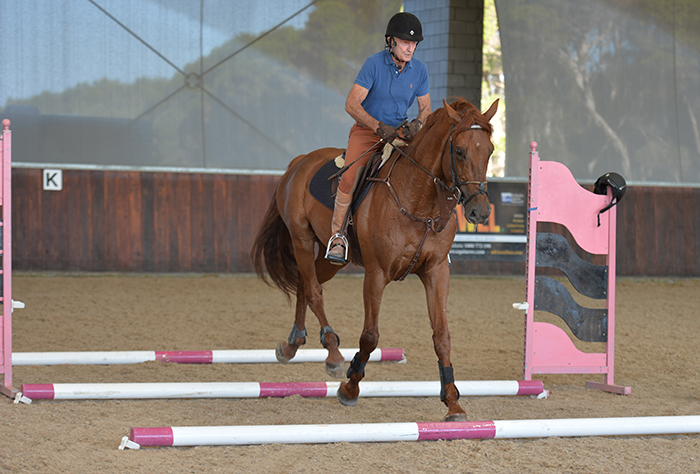
It is no surprise that George LOVES cavalletti – why? Because like all of his teachings, the aim is to make it comfortable, easy for the horse:
“You should incorporate cavalletti work every day because it is not taxing the horse. Use them in walk, trot and canter.”
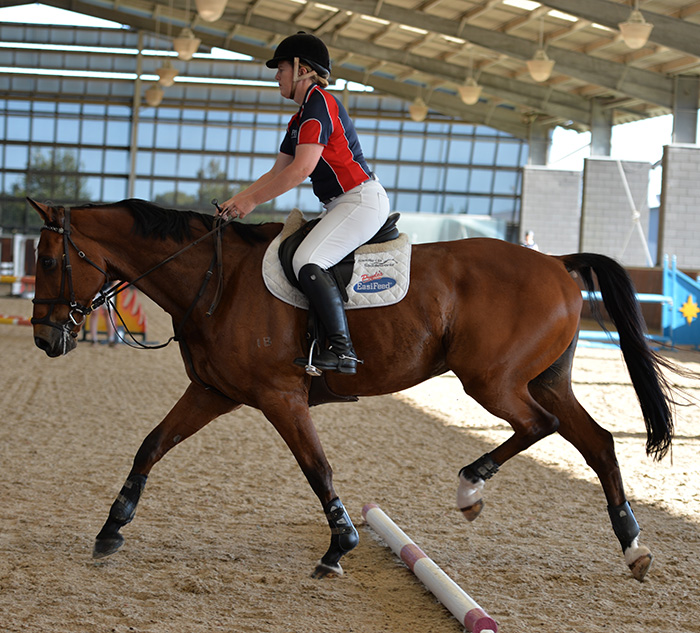
Michelle and Archie
And then George moves on to the fourth gear.
“Now lean forward and gallop, this is the fourth episode of riding the horse in a light seat. Lean forward and make it easier for the horse. You can gallop circles and flying changes, out of the saddle, this light seat is a very ancient seat.”
George’s command for a half turn and reverse has been bamboozling Australian riders for the last twenty years. Once upon a time, riders knew the school figures off by heart, because they used them all the time. The group is no exception. If you are wondering, you ride off the wall in a shallow diagonal and ride a half volté back to the wall and continue in the opposite direction.
Time to start jumping, and George has a lot of space below the top rail. Why?
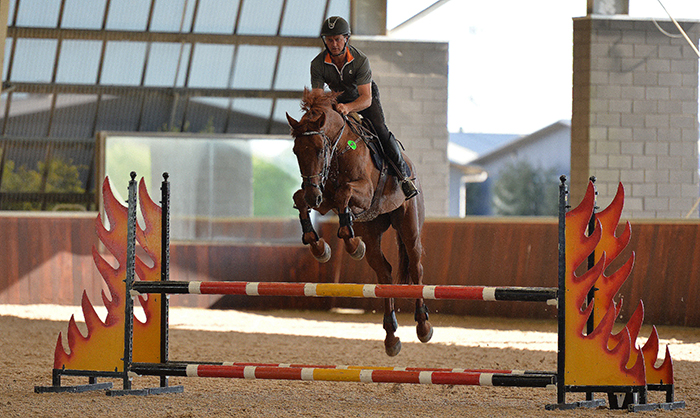
“Because we want to keep the fences airy. What is the sport of showjumping today? Airy. After the jumps, circle, shoulder in, shoulder in is a leg exercise, leg on, but don’t sit. It’s the details that are important, the jumps are easy. It’s the rideability details.”
Time out to walk the horses, but it is never time out for the riders. “When you walk on a loose rein, keep the impulsion, use your spurs or whip. Rest the horse, but you don’t go to sleep, keep the impulsion, the rhythm and the straightness.”
Jumps time. “This side is a 71 feet. It’s a nice five strides to the triple, a nice six to the next, turn left, to the corner, a short left, a short right. The liverpool to the vertical is a nice five, then there is a very short reverse turn (and you thought you’d never need it on a jumping track) after the triple bar.”
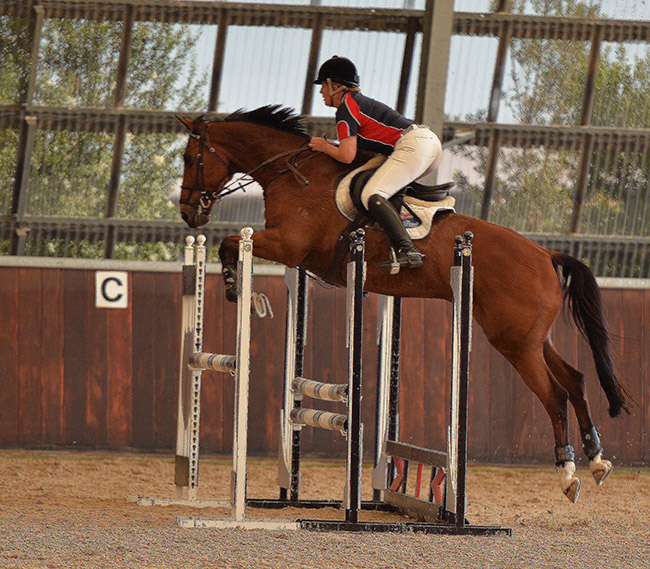
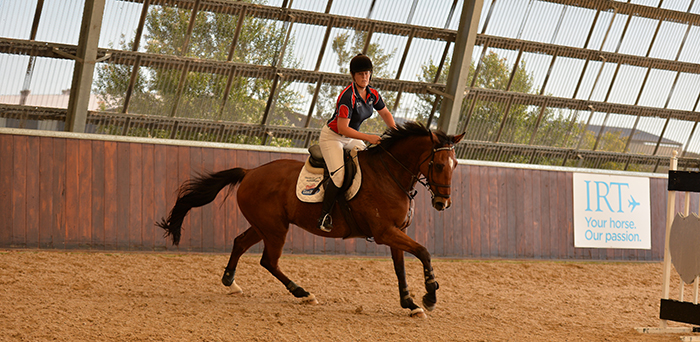
“If you gallop to the first fence, it gives impulsion and you don’t have to push for the five. Even on the figure eight, don’t lean back, that crushes the horse’s loins. Drop your hips back not your shoulders, on the short turn, a deeper seat but still your body forward.”
Day 2 follows
Next morning, bright and early, George was leading the School Quadrille on Paul Brent’s imported stallion, Fontaine Blue VDL. It reminds me of the many satisfying hours I spent riding at Oakwood where Malcolm Barns would have up to ten combinations all working together in the arena, doing all the same movements as the ones George is demonstrating…
“The horse must learn to accept the rider. Sit in front of the saddle on your crotch and two seat bones. Back arched and inside leg on the horse. That’s the first aid, inside leg to outside rein. Impulsion is the horse’s desire to go forward from my inside leg.”
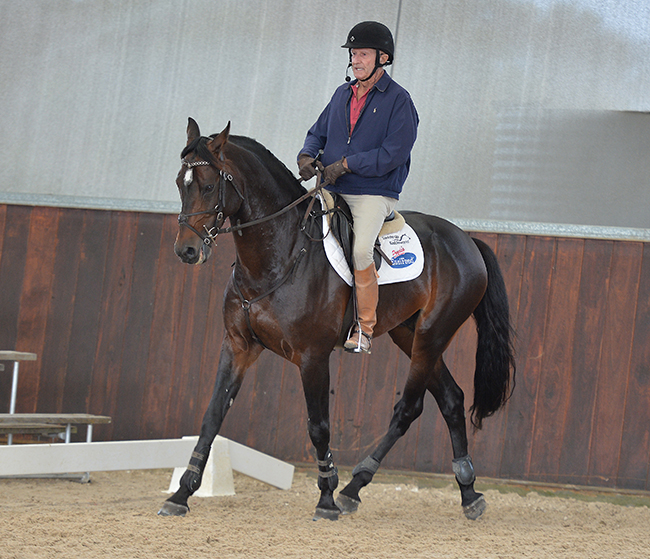
“Keep the horse’s neck rigid and straight to control the shoulders, to control the horse’s feet. Ride serpentines to lighten his shoulder, his shoulder should be under our hands.”
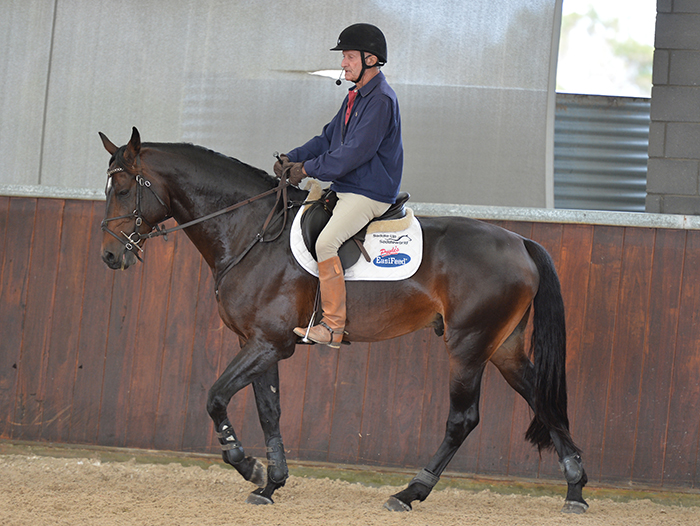
Back to walk: “The horse follows my hands in the walk. Note the suppleness of the rider’s arm.”
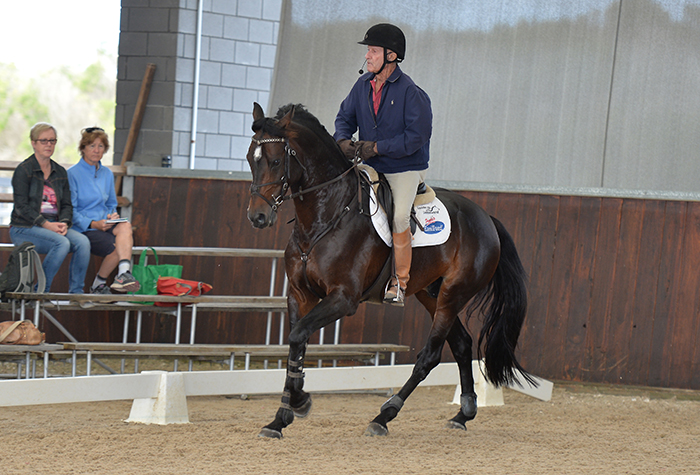
And canter, still paying attention to straightness: “To keep the straightness, canter much of the time in shoulder fore.
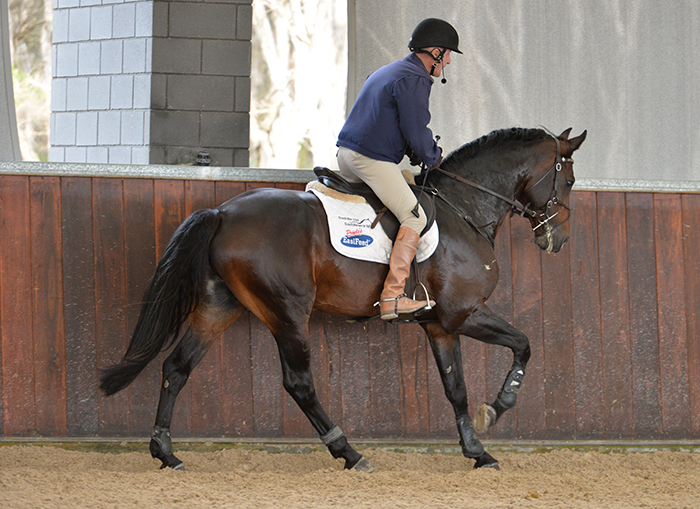
From time to time, touch him with the spur to keep the three-time canter. It is easy for him to go four-time. Spiral in the circle, legs, legs, out and out of the saddle and go forward. Into trot and slip the reins and let the horse eat the dirt.”
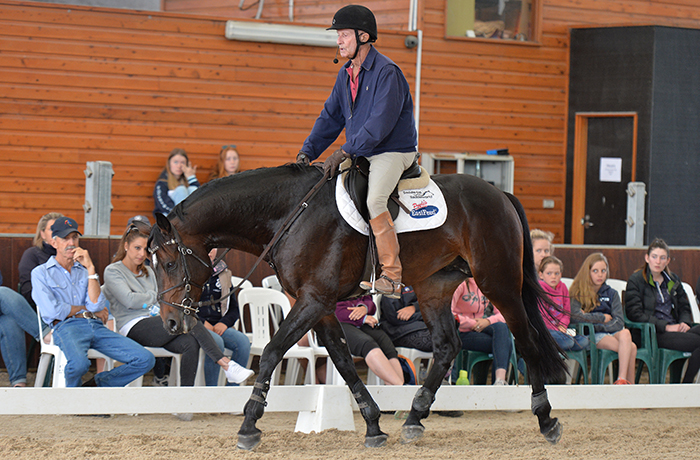
“Long and low at the end. When you lower the neck by engagement progressively, the hind end comes under the horse and then you can ride deep.”
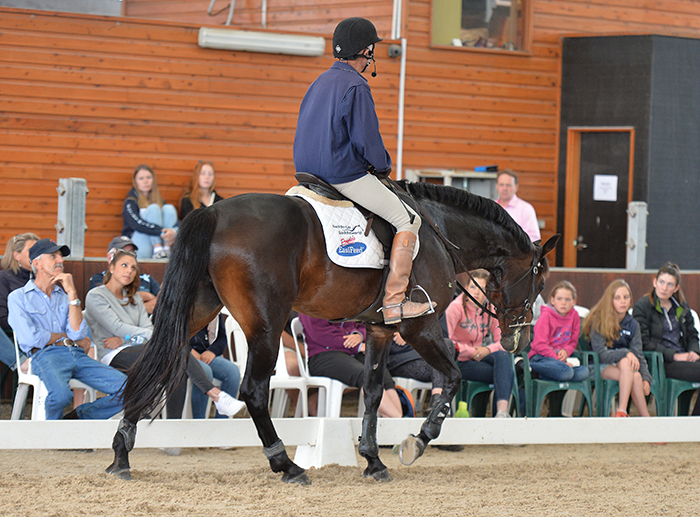
Cavalry drill over, it was back to Fontaine Blue and his particular issue:
“This horse has a contact problem, when he jumps the fence he throws his head. I love this horse, he’s a wonderful horse, but we have to work on contact.
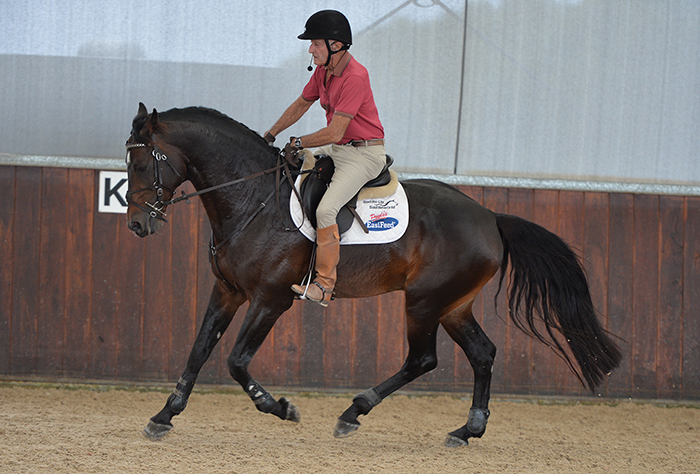
“Shorten the rein, close the fingers, take contact, raise your hand and the horse has to yield. Horse resists – raise hands.”
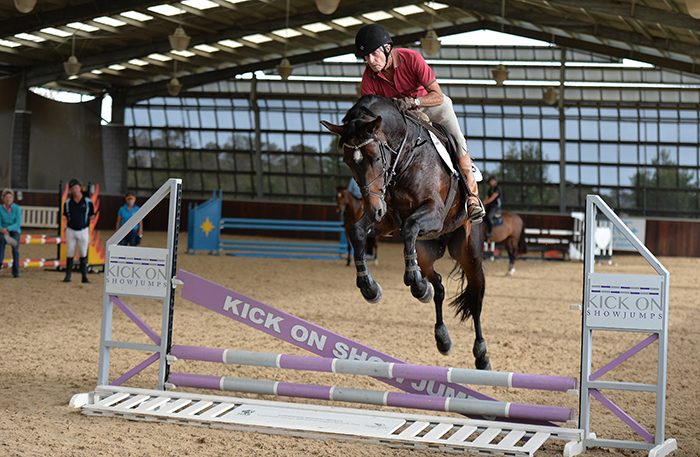
“At the fence, lower your hands, but keep the contact, supple, definite contact. The horse doesn’t accept the contact because you drop the contact.”
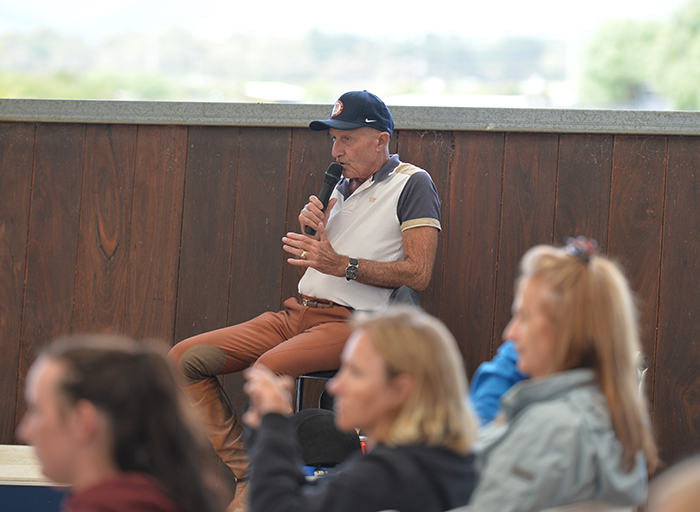
“You can’t legislate horsemanship, I can only be responsible for my own horsemanship and can share it with you. It’s what you study. I was born a bad rider, very chicken, very stiff, no timing for the fence. My coach, Gordon Wright said to my mother, perhaps he should try tennis, then six months later, swimming. But I loved riding and I worked ten times to your one. I particularly read books.”
“Or you can learn it by riding together, a good group will talk and absorb from each other, horsemanship rubs off. Norman dello Joie, Anne Kursinski, Ian Millar, Peder Fredricson, I brought them up, we rode together and absorbed. Here the horses lack impulsion, and the people lack impulsion. The horses in Germany don’t lack impulsion, the people don’t lack impulsion.”
“For this next exercise it is very specific how you ride the oxer. We want to teach the horse to find a very short spot to this tiny oxer. It’s like collection, a short distance is much more difficult than a long one. Collect by shortening the hind end and lengthening the neck – I remember sitting with Harry Boldt at Aachen watching the dressage, and he was saying, too short in the neck, too short in the neck, too short in the neck.”
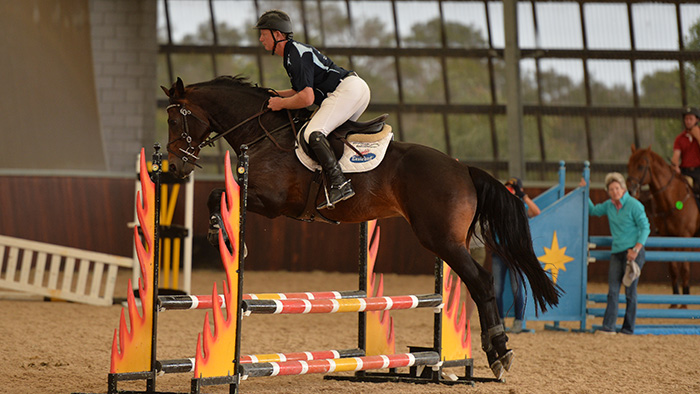
“Now jump the line and come back. Starts with a short two, then a nice two, a nice one, reverse and come back again.”
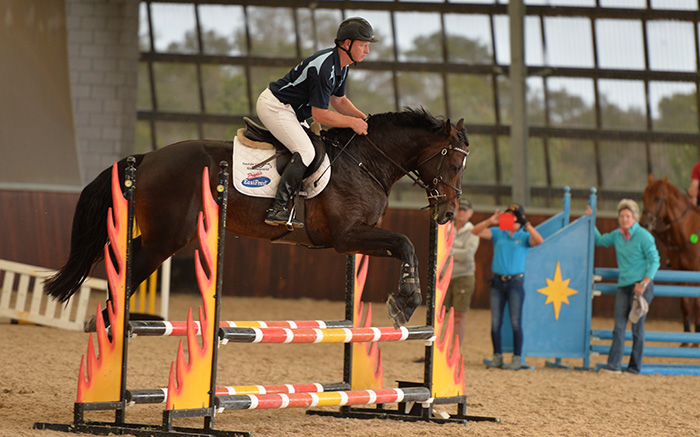
“Watch now, Paul keeps the connection on his horse and you can see, and he can feel, the difference.”
And as always, George is happy if the horse gives the fence a little tap. “These are good horses, careful horses, that light touch is like poling, they are very sensitive.”
*** historic note, poling was once common and legal in the USA, and involved rapping the horse with a bamboo pole as it cleared the jump. It is illegal under FEI rules and seldom seen today.
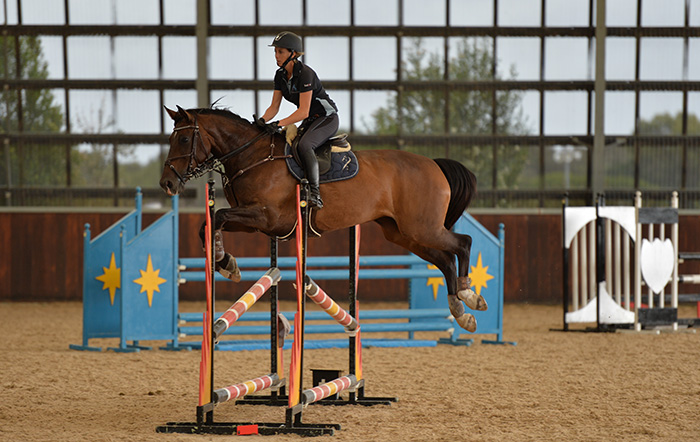
Angela and Jelly Bean
Now the little course was becoming more complicated. “Ride the triple bar off your eye, ride the Swedish oxer off your eye, then five to the pink fence, five to the Plank, and eight strides to the Liverpool, and finish with a halt in the corner. The Swedish to the pink is a short five, so you will have to ride a bending five.”
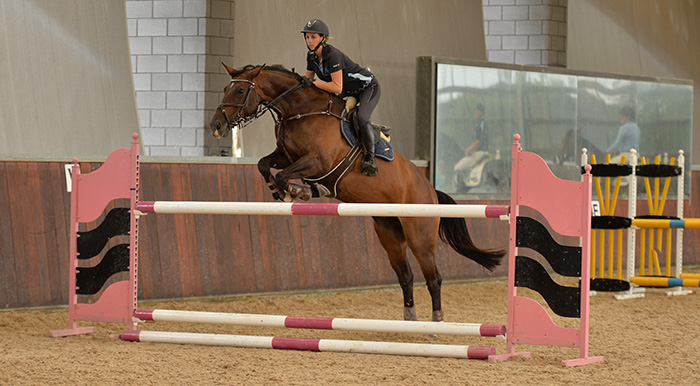
“No you rode that in four, do it again, stay out for the five. What is important in this exercise is the three to the pink, and the eight to the liverpool.”
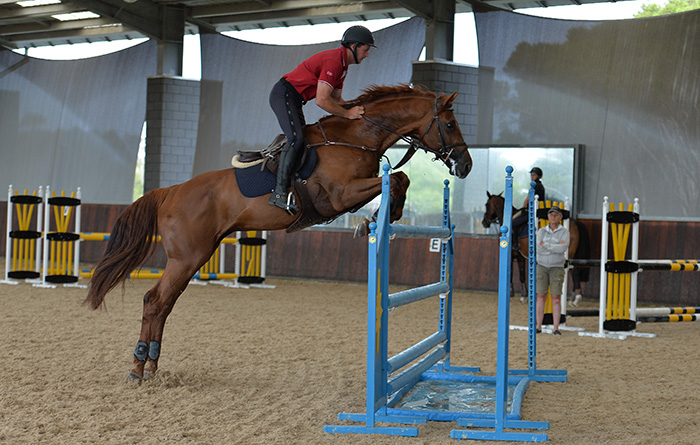
“Finish with a faster gallop to the liverpool, the horse uses his initiative and gets a light rub, he poles himself. Do not move to the liverpool, it’s very delicate, faster to the base. Pace to the base, watch Nick Skelton. It’s an exercise to teach the horse fast to the base, to teach the horse self-initiative. It’s very kind poling, the horse does it to himself, and it is very gentle.”
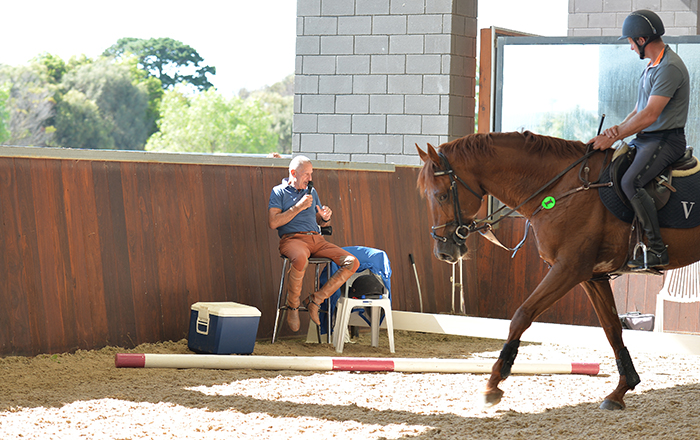
As you might expect the cooling down is total relaxation for the horse, but the rider still has to work, “ride without stirrups, that’s good for you. Bareback is even better. If you take home even 20% of these clinics, you are a genius.”
I guess the real genius is one George H Morris…
Breeding jumpers? Rascin is one of the genetic Goldmines available from International Horse Breeders – http://ihb.com.au/product/rascin/
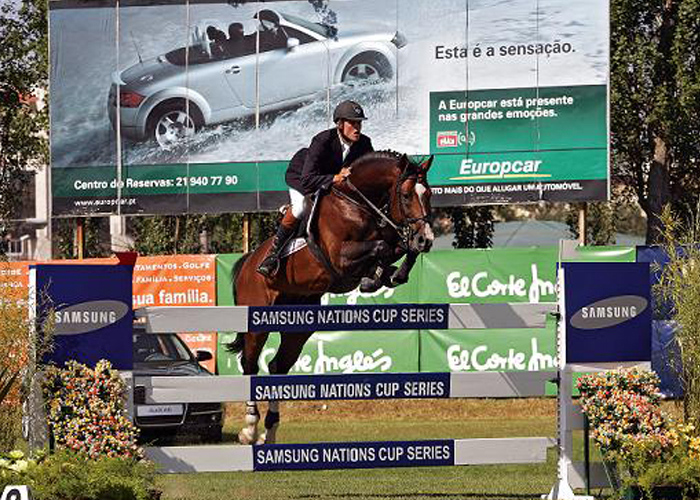
And there’s lots more – www.ihb.com.au


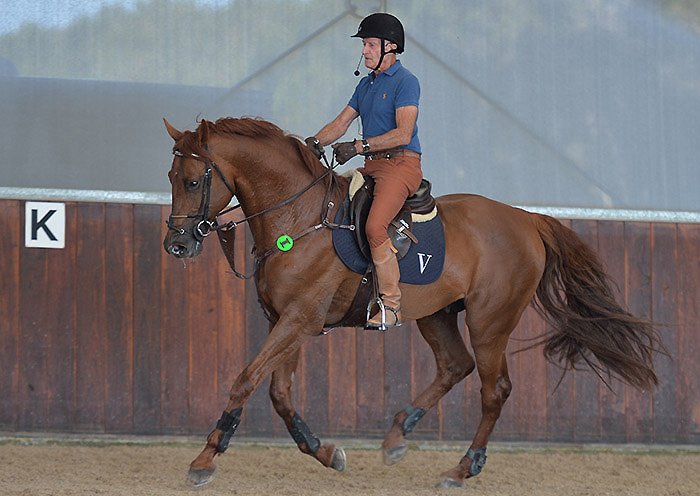

I just had a very great read 🙏 thanks to you “the horse magazine team”.